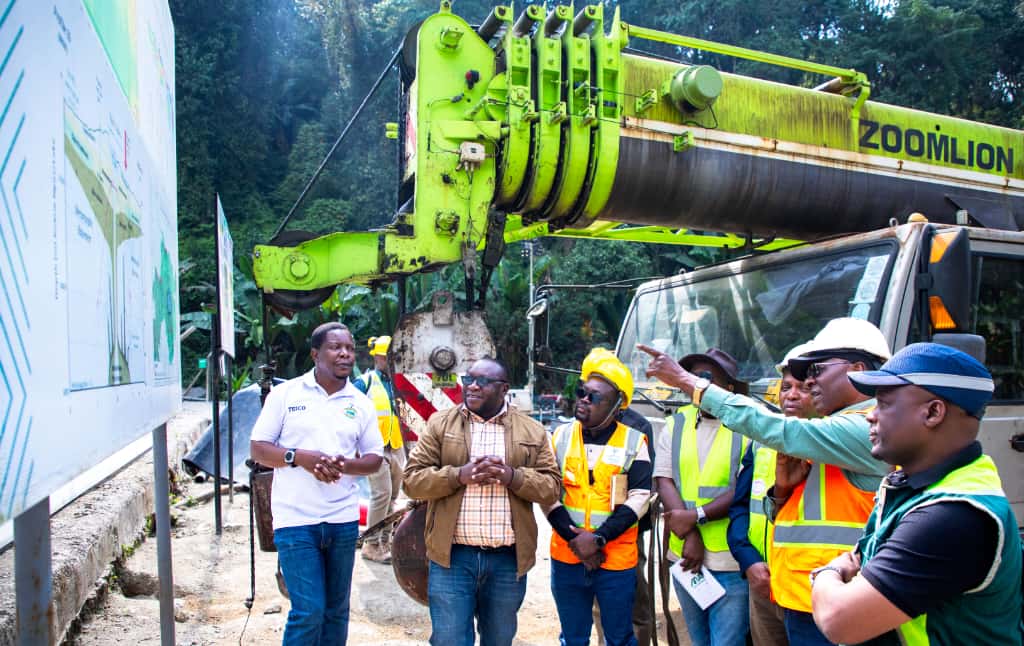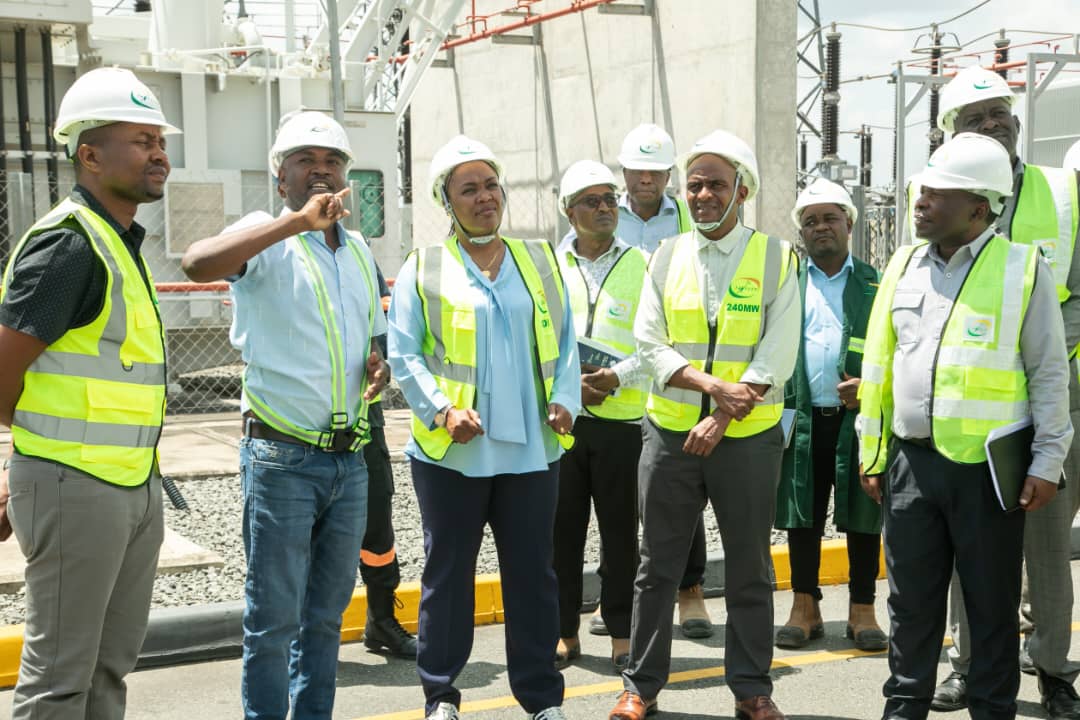Dar es Salaam. The Dar es Salaam Port achieved a historic performance milestone in August 2025, surpassing all previous records and cementing its position as one of the fastest-growing logistics gateways in Africa.
According to operational data released this week by DP World, a major operator at the port, 34,184 twenty-foot equivalent units (TEUs) of containers were handled during August, the highest figure ever recorded in its history.
The volume represents a remarkable 59 per cent increase compared to the same period last year, underscoring the port’s growing role in facilitating trade for Tanzania and its hinterland markets.
In addition to containerised cargo, the facility processed 21,237 vehicles through roll-on/roll-off (RORO) operations, reflecting a 39 per cent year-on-year rise.
This surge was attributed largely to increased imports of passenger and commercial vehicles, supported by improved handling efficiency at the RORO terminal.
Bulk cargo operations also registered impressive gains. The port handled 446,608 tonnes of dry bulk cargo, setting a new monthly record and posting a 26 per cent increase compared to 2024.
Meanwhile, general cargo throughput reached 231,000 tonnes, up 9 per cent year-on-year, driven mainly by construction materials, agricultural inputs, and industrial goods.
The August achievement follows another record-breaking month in July, when the port processed 29,665 TEUs, nearly 15,000 vehicles, 381,000 tonnes of dry bulk, and 158,000 tonnes of general cargo.
DP World said the results reflected not only investments in equipment and systems but also closer collaboration with Tanzanian authorities.
“These achievements are more than just numbers. They reflect operational excellence and the willingness of institutions such as the Tanzania Ports Authority (TPA) and the Tanzania Shipping Agencies Corporation (TASAC) to take bold initiatives that support Tanzania’s role as a regional logistics hub,” the company noted in its update.
A strategic lifeline for Tanzania and its neighbours
The Dar es Salaam Port is Tanzania’s principal maritime gateway, handling more than 90 per cent of the country’s international trade.
It also serves as a vital transit corridor for landlocked countries, including Zambia, Malawi, the Democratic Republic of Congo (DRC), Rwanda, Burundi and Uganda.
The facility’s significance has grown as regional economies expand and trade under the African Continental Free Trade Area (AfCFTA) accelerates.
By offering a shorter and more cost-effective route to the Indian Ocean, the Dar es Salaam corridor has become increasingly attractive for shippers seeking alternatives to longer and more congested routes through southern Africa.
Industry analysts say the recent performance reinforces Tanzania’s ambitions to position itself as a logistics hub for Eastern and Southern Africa.
With competition from ports such as Mombasa in Kenya, Beira in Mozambique and Durban in South Africa, Dar es Salaam’s success depends on continuous efficiency improvements and seamless regional connectivity.
Government reforms boosting competitiveness
The record-breaking throughput comes in the wake of government reforms aimed at modernising Tanzania’s ports and improving the ease of doing business.
Since assuming management of the Dar es Salaam Port in 2023, DP World has embarked on an ambitious programme of operational upgrades, including the deployment of modern cargo handling equipment, digitisation of customs processes, and enhanced vessel turnaround times.
The government has complemented these efforts through regulatory measures and infrastructure development.
TPA has focused on expanding berths, dredging deeper channels to accommodate larger vessels, and strengthening inland transport links to ensure smooth cargo evacuation.
TASAC, on the other hand, has supported policy measures that streamline shipping operations and encourage private sector participation.
These initiatives align with Tanzania’s broader development vision, which emphasises infrastructure investment as a driver of economic growth.
Efficient port operations are considered critical not only for boosting exports and imports but also for reducing the cost of doing business across the region.
DP World’s global footprint
The performance in Dar es Salaam adds to DP World’s global portfolio of logistics achievements.
Headquartered in Dubai, the company operates more than 80 marine and inland terminals across six continents, including major hubs in Jebel Ali (UAE), London Gateway (UK), Antwerp (Belgium), and Santos (Brazil).
In Africa, DP World has invested heavily in modernising and operating ports in Senegal, Egypt, Mozambique and Somaliland.
The Dar es Salaam concession is seen as a key pillar of its African expansion strategy, positioning Tanzania at the centre of east-west trade flows across the Indian Ocean.
By leveraging its global expertise, DP World has introduced best practices in terminal operations, automation, and supply chain integration.
Analysts argue that this is already bearing fruit in Dar es Salaam, as evidenced by the port’s improved cargo dwell times and higher vessel productivity rates.
Competition with regional ports
The growth of the Dar es Salaam Port also has implications for regional competition.
Kenya’s Port of Mombasa has long been the dominant maritime hub in East Africa, serving not only Kenya but also Uganda, Rwanda, Burundi and parts of DRC.
However, recent congestion, rising costs and infrastructural bottlenecks at Mombasa have prompted many shippers to consider alternative gateways.
Tanzania’s investments in Dar es Salaam, along with ongoing development of the Tanga and Mtwara ports, are increasingly positioning the country as a credible alternative.
Further south, Mozambique’s Port of Beira has also been expanding its capacity, particularly to serve Zimbabwe, Malawi and Zambia.
Yet, Dar es Salaam’s proximity and improved services have given it a competitive edge in attracting traffic bound for Central and Southern Africa.
Economic implications
The record-breaking throughput at Dar es Salaam is expected to deliver tangible economic benefits.
Higher cargo volumes translate into increased revenues for both DP World and the Tanzanian government through port fees, customs duties, and value-added trade.
More importantly, efficient port operations reduce the cost of logistics for businesses, thereby improving Tanzania’s competitiveness as a trading nation.
For landlocked neighbours, Dar es Salaam’s improved performance means quicker access to global markets and reduced reliance on longer and costlier transport corridors.
Economists argue that such improvements could catalyse growth in key sectors such as agriculture, mining, and manufacturing.
For example, Tanzania’s growing exports of cashew nuts, coffee, and minerals such as gold and graphite stand to benefit from faster turnaround times and reduced shipping costs.
The momentum achieved in July and August 2025 is expected to continue in the months ahead, with DP World projecting further growth in container volumes, bulk cargo and vehicle handling.
Ongoing investments in infrastructure, including plans to expand inland container depots and improve rail connectivity, are likely to consolidate Dar es Salaam’s role as a leading trade hub.
Observers note, however, that sustaining the growth will require continued collaboration between government agencies, private operators and regional partners.
Issues such as customs harmonisation, non-tariff barriers and cross-border infrastructure must be addressed to fully unlock the port’s potential.
Nonetheless, the record set in August represents a significant milestone in Tanzania’s logistics journey.
It demonstrates that with the right mix of investment, reform and collaboration, Dar es Salaam Port has the potential to rival Africa’s leading maritime gateways.







